Billing Practice
Top 7 Billing Practice Strategies for Increased Revenue in Healthcare
Foundations of Effective Billing
Verify Patient Insurance Eligibility
Verify patient insurance coverage and benefits to ensure accurate billing and minimize medical billing errors.
Use automated real-time eligibility (RTE) checks to reduce errors and streamline the billing process.
Ensure accurate patient information to prevent billing errors and ensure efficient revenue cycle management.
Verify patient enrollment status and whether the medical practice is a covered healthcare provider.
Use insurance verification tools to streamline the process and reduce billing errors.
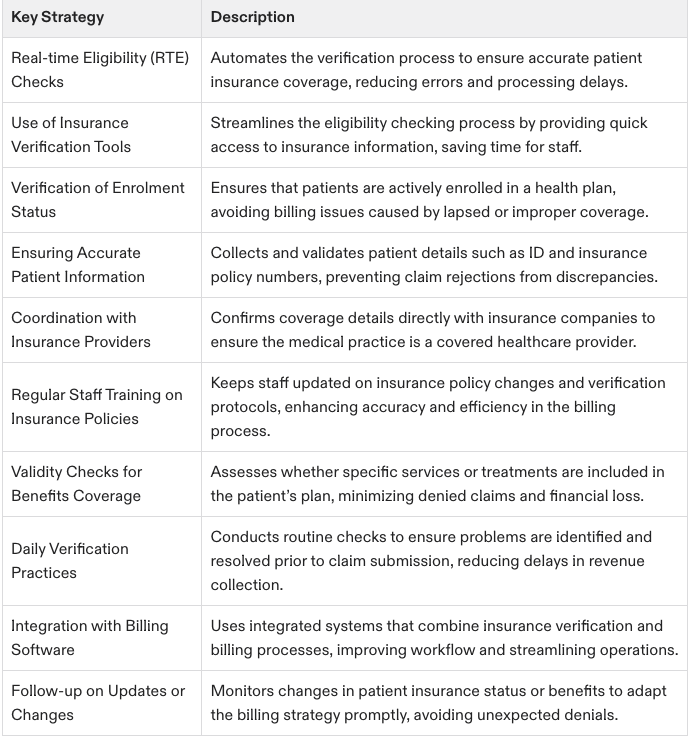
Medical Billing Best Practices
Standardize Billing Procedures and Rules for Staff
Establish standardized patient billing rules to minimize confusion and reduce medical billing errors.
Create clear guidelines for coding, claims submission, and payment processes for staff.
Communicate billing procedures and rules to ensure staff are on the same page.
Train staff on medical billing best practices, such as enhancing medical coding service and using digital forms.
Use technology to streamline the process and reduce errors.
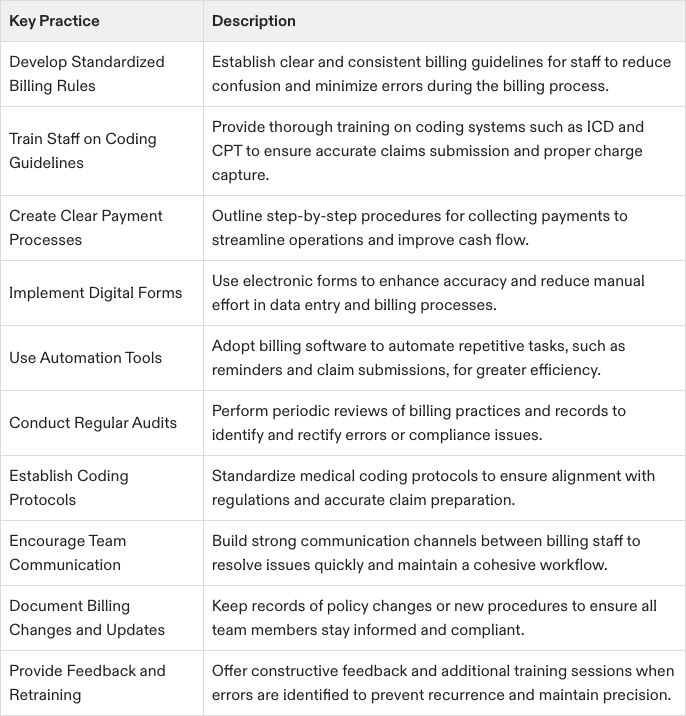
Billing Process Optimization
Code Correctly and Ensure Proper Charge Capture
Assign accurate medical codes to procedures, diagnoses, and services performed to ensure proper reimbursement.
Comply with coding guidelines, such as ICD and CPT, to ensure accurate coding and charge capture.
Use medical billing software to streamline the coding process and reduce errors.
Ensure proper charge capture to prevent lost revenue and minimize billing errors.
Regularly review and update coding guidelines to ensure compliance.
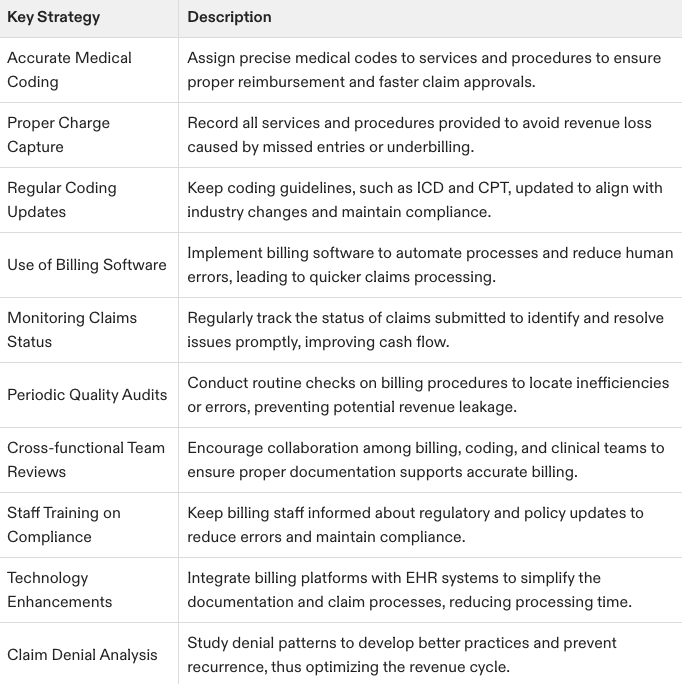
Claims Management
Submit Claims in a Timely Manner and Follow Up on Unpaid Claims
Submit claims as quickly as possible to avoid delays and claim denials.
Develop a routine process for submitting claims to ensure timely submissions.
Use technology to streamline the process and reduce errors.
Follow up on unpaid claims to encourage patients to make payments.
Implement best practices for following up on unpaid claims, such as using automated reminders.
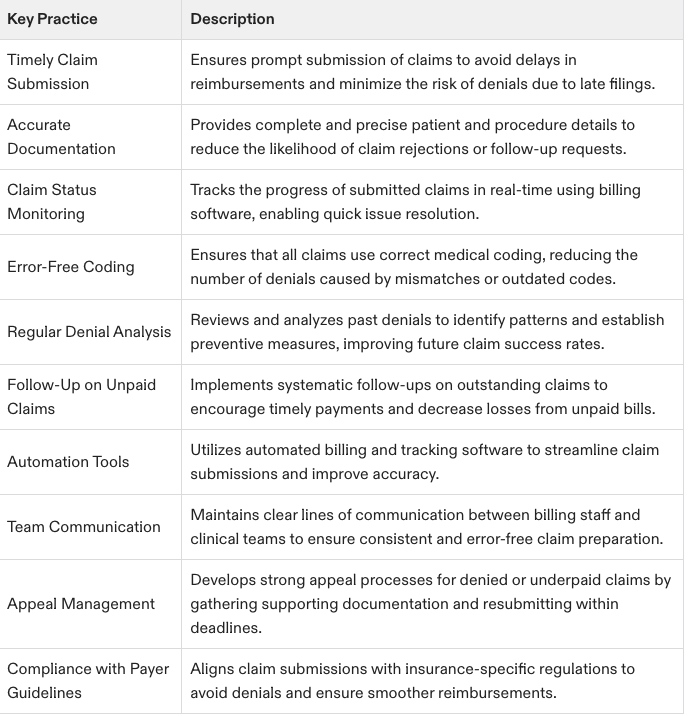
Medical Practices Revenue Cycle Management
Implement Effective Denial Management and Stay Compliant with Regulations
Proactively set up a structured denial management process to track, analyze, and resolve claim denials.
Develop a systematic approach to review denials, gather supporting documentation, and submit strong appeals within the specified period.
Stay informed about changes in medical billing regulations and adjust practices accordingly.
Ensure compliance with regulations, such as HIPAA, to prevent billing errors and ensure patient satisfaction.
Regularly review and update billing procedures to ensure compliance.
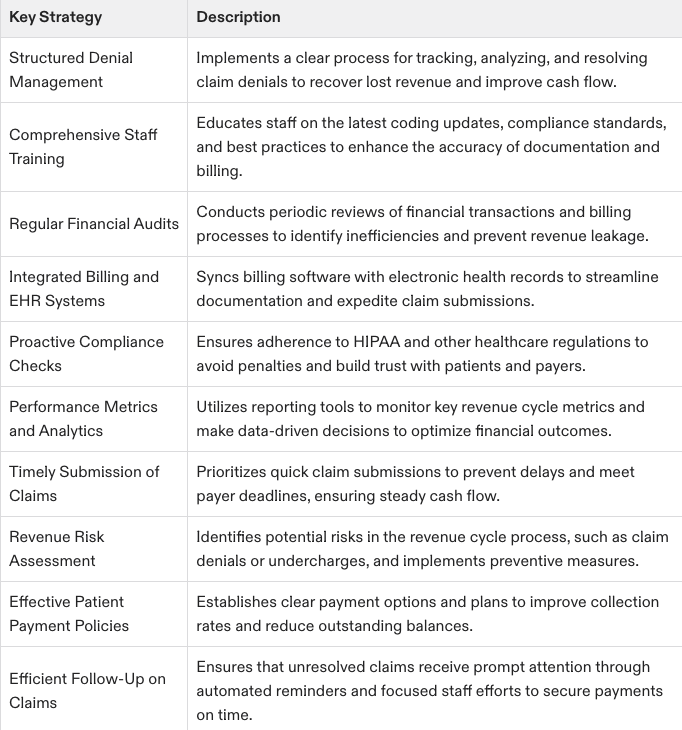
Patient Communication and Education
Provide Patient Education and Establish a Patient Communication Workflow
Educate patients on the importance of medical services and the billing process.
Use patient education to counter negative mindsets about healthcare costs.
Establish a patient communication workflow to follow up on unpaid claims and provide patient support.
Provide clear and concise billing statements to patients to prevent confusion.
Offer patient payment plans and options to improve patient satisfaction.
Technology and Process Improvement
Leverage Technology to Streamline the Billing Process and Improve Efficiency
Implement integrated EHR and medical billing software to improve reimbursement speed.
Automate billing tasks, manage claims, and provide billing analytics.
Use digital forms to collect patient information and integrate it into practice management software.
Leverage technology to streamline the billing process and reduce errors.
Regularly review and update billing procedures to ensure efficiency and compliance.
